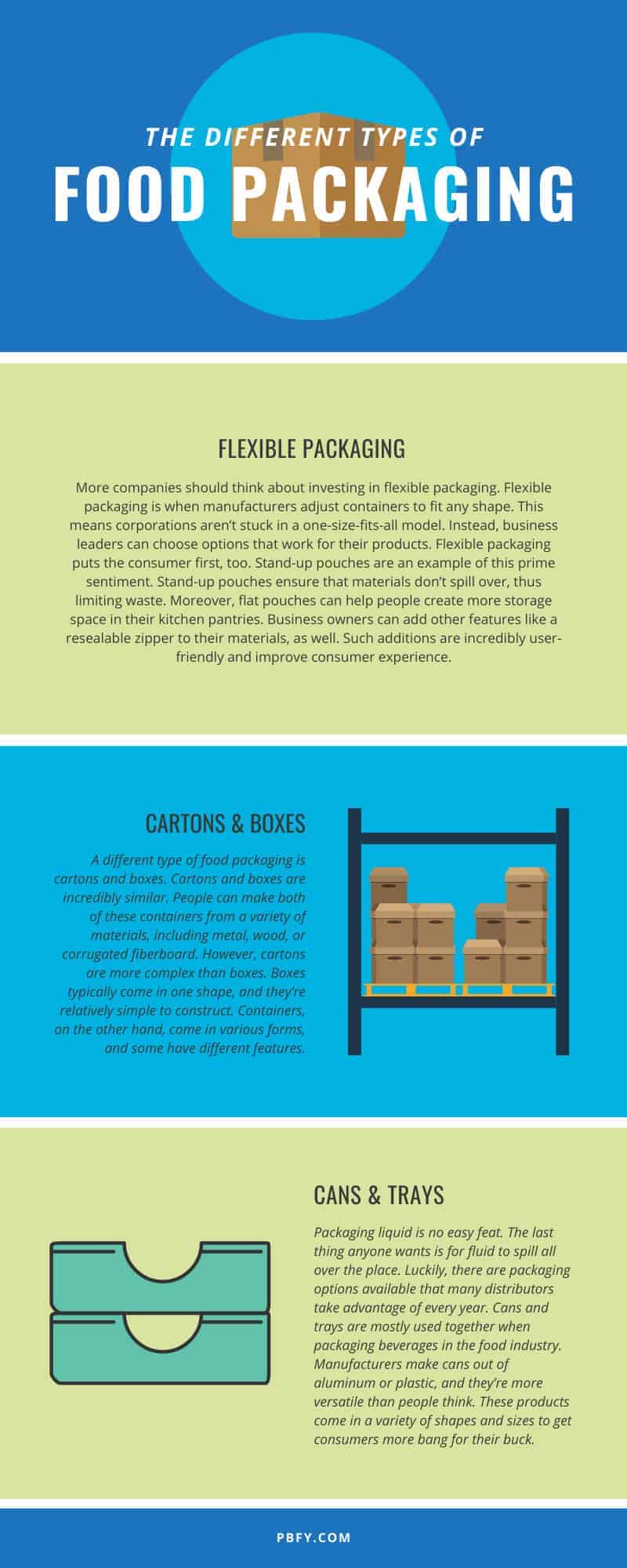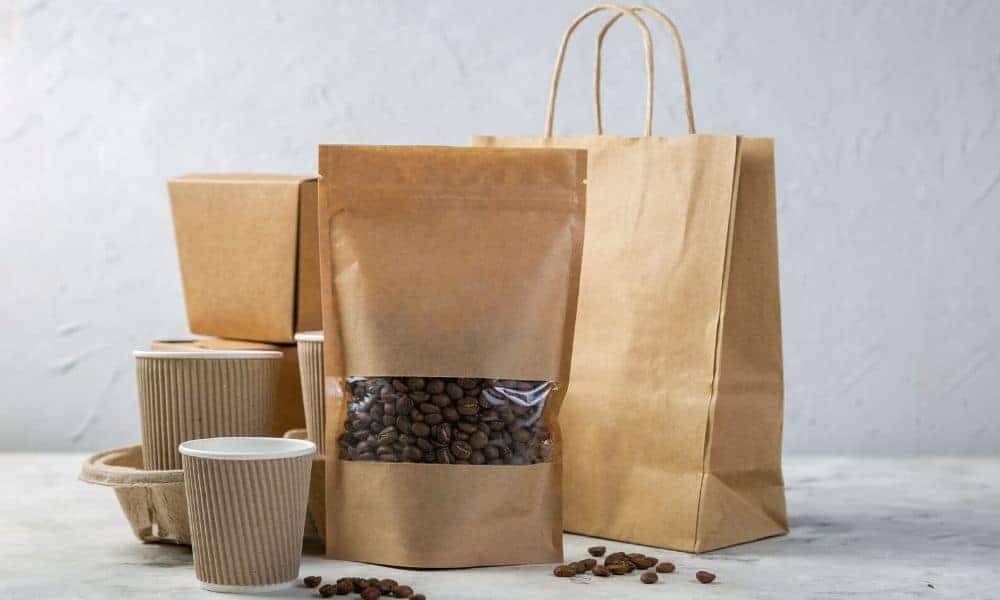Blog
The Different Types of Food Packaging
In business, trust is everything. This sentiment is especially true when discussing the food packaging industry. People want to go to the grocery store and pull items off the shelves without a second thought. If companies use trusted packing partners, this is an attainable goal. However, the minute a shopper arrives home with a damaged container, that trust is broken. So, corporations should consider investing in superior wrapping options to ensure product quality and consumer safety. This article will overview the different types of food packaging available to business leaders. Using top-of-the-line packaging products will surely build trust within the customer base.
Flexible Packaging
More companies should think about investing in flexible packaging. Flexible packaging is when manufacturers adjust containers to fit any shape. This means corporations aren’t stuck in a one-size-fits-all model. Instead, business leaders can choose options that work for their products. Flexible packaging puts the consumer first, too. Stand-up pouches are an example of this prime sentiment. Stand-up pouches ensure that materials don’t spill over, thus limiting waste. Moreover, flat pouches can help people create more storage space in their kitchen pantries. Business owners can add other features like a resealable zipper to their materials, as well. Such additions are incredibly user-friendly and improve consumer experience.
Flexible packaging is also better for the environment and more durable than other choices on the market. Most flexible packing companies use sustainable materials that won’t be damaged by harmful UV rays or other weather hazards. So, business leaders can rest easy that their products are delivered safely. Finally, custom food packaging is much easier when working with a flexible packaging company. If supervisors work with a trusted casing company, they can place their logo on containers to improve brand recognition. Since it’s a unique marketing tactic and it enhances the customer experience, more distributors should think about flexible packaging.
Cartons & Boxes
A different type of food packaging is cartons and boxes. Cartons and boxes are incredibly similar. People can make both of these containers from a variety of materials, including metal, wood, or corrugated fiberboard. However, cartons are more complex than boxes. Boxes typically come in one shape, and they’re relatively simple to construct. Containers, on the other hand, come in various forms, and some have different features.
Gable cartons must be pinched at the top and then opened by the user. This extra safety precaution keeps food items fresher for longer. Aseptic cartons also require a little work on behalf of the consumer. These types of cartons are made from paper, aluminum, and plastic. Much like gable cartons, aseptic packages keep products such as milk and juice fresh for a longer period of time. However, aseptic cartons are typically not the most environmentally friendly choice. While the three components (paper, aluminum, and plastic) can all be recycled, it’s nearly impossible to separate them after someone puts them together. So, these aren’t the best choice for people who are committed to sustainability.
Other cartons include flat cartons that are constructed at a manufacturing plant, as well as egg cartons. Cartons and boxes are useful for prolonging the shelf life of some food items. However, even though there are multiple options available, these packaging methods don’t offer as much variety as flexible packaging. The most significant drawback to cartons and boxes is their shape. Egg cartons, for example, are such a unique shape that it’s difficult to reuse them. Cereal boxes often take up space in pantries, too. For these reasons, business owners shouldn’t rely solely on cartons and boxes to fulfill their packaging needs. While there are benefits to these products, there are numerous disadvantages, as well.
Cans & Trays
Packaging liquid is no easy feat. The last thing anyone wants is for fluid to spill all over the place. Luckily, there are packaging options available that many distributors take advantage of every year. Cans and trays are mostly used together when packaging beverages in the food industry. Manufacturers make cans out of aluminum or plastic, and they’re more versatile than people think. These products come in a variety of shapes and sizes to get consumers more bang for their buck. Business owners can also employ marketing strategies when using cans. Supervisors should work with packaging companies to create a label that can be placed on a can and withstand moisture in case it gets wet.
Trays often accompany cans in the food packaging industry. Most distributors use these items to make transportation easier. These products are usually made out of cardboard. Cases of water, for example, are generally placed on trays and then wrapped to make it easier to move them. Stretch wrap is another invaluable tool in the food packaging industry for this reason alone. The elastic plastic material can wrap around a package to protect it from damage. Since they make transportation more convenient for customers and securely package beverages, trays, and cans are a vital type of food packaging.
We hope this list helped you review the different types of food packaging. While there are advantages to all of these options, flexible packaging offers corporations the most variety. For starters, this alternative is incredibly durable. Thus, business owners can create a loyal customer base by ensuring their products’ safe delivery. People want to know that their products are safe for consumption, and flexible packaging will give buyers the peace of mind they need while shopping.
Flexible packaging is also better for the environment because most packaging items are reusable. People can also cut down on their waste by keeping food fresh so that it lasts longer. Any corporation that wants to improve consumer experience should contact PBFY Flexible Packaging today. We’ll help any company with their packaging needs and make sure they end up with a product that fits their vision. We also offer custom food packaging for businesses interested in labeling their materials. There’s no reason a business’s products can’t also be used as a solid marketing strategy. We want to help as many people as possible achieve their goal of delivering safe and high-quality products to an expanding customer pool.






